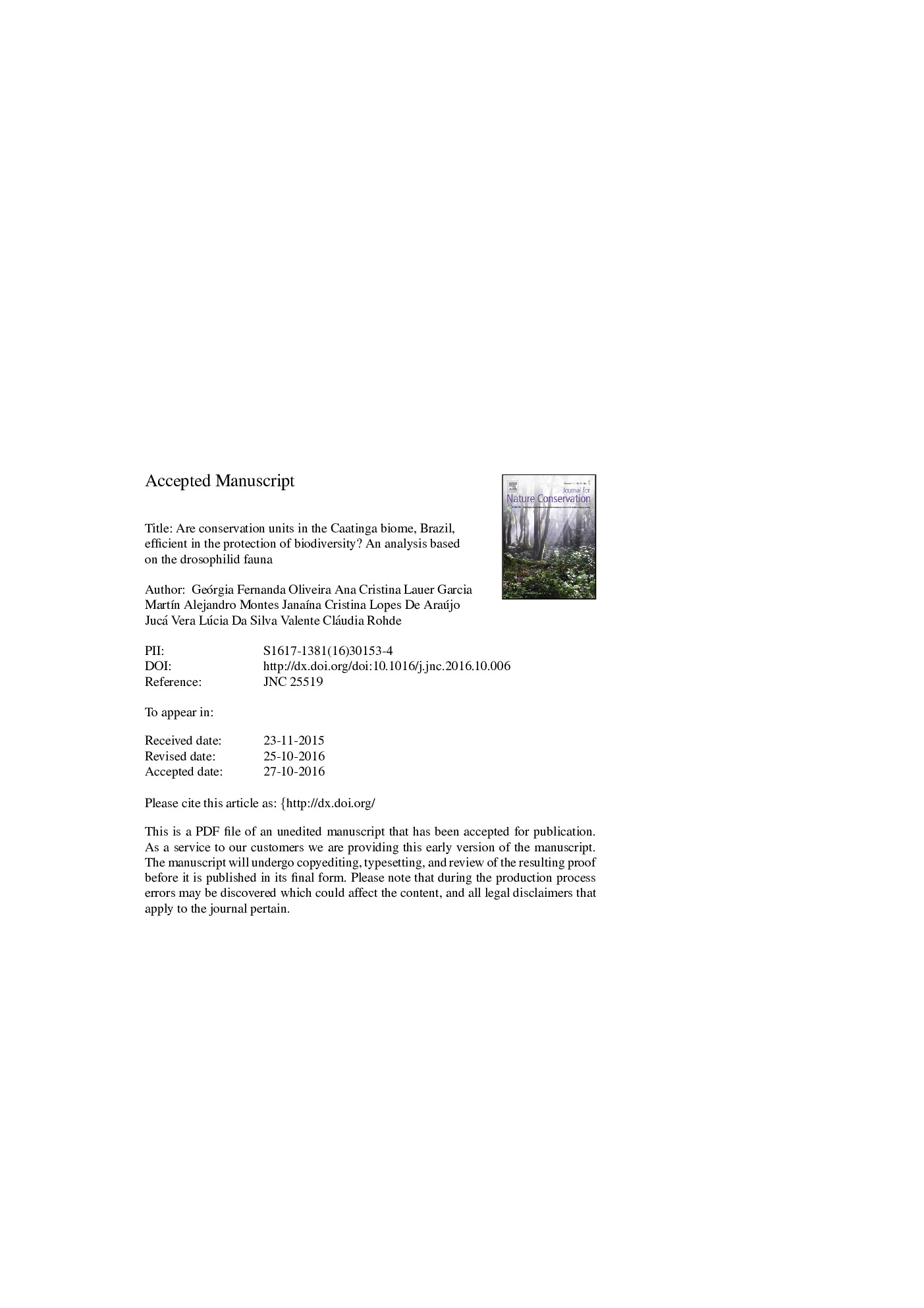| Article ID | Journal | Published Year | Pages | File Type |
|---|---|---|---|---|
| 8849346 | Journal for Nature Conservation | 2016 | 25 Pages |
Abstract
Biodiversity is believed to be low in regions with vegetation that has adapted to water stress. Additionally, there is little interest by authorities in establishing and expanding conservation units in these areas. In Brazil, the Caatinga and the Cerrado biomes comprise this xerophilous vegetation. In both, climate is tropical and the dry season is long and well-defined. The Caatinga is the Brazilian biome with the smallest area protected by conservation units. This study evaluates the efficacy of conservation units in the Caatinga biome based on abundance and richness of drosophilids. Flies were collected inside and outside these areas. In total, approximately 23,000 flies of 32 species were collected in six conservation and six non-conservation sites. Two non-described species occurred exclusively inside protected areas, underlining the importance of conservation efforts in the maintenance of biodiversity. Other species were recorded exclusively outside conservation areas, which emphasizes the importance of establishing and expanding conservation units in the Caatinga. Native species were significantly more abundant inside conservation units, though the richness was similar in protected and non-protected areas. Abundance of exotic species outside conservation areas was statistically different in comparison with that of native ones.
Related Topics
Physical Sciences and Engineering
Earth and Planetary Sciences
Earth and Planetary Sciences (General)
Authors
Geórgia Fernanda Oliveira, Ana Cristina Lauer Garcia, MartÃn Alejandro Montes, JanaÃna Cristina Lopes De Araújo Jucá, Vera Lúcia Da Silva Valente, Cláudia Rohde,
